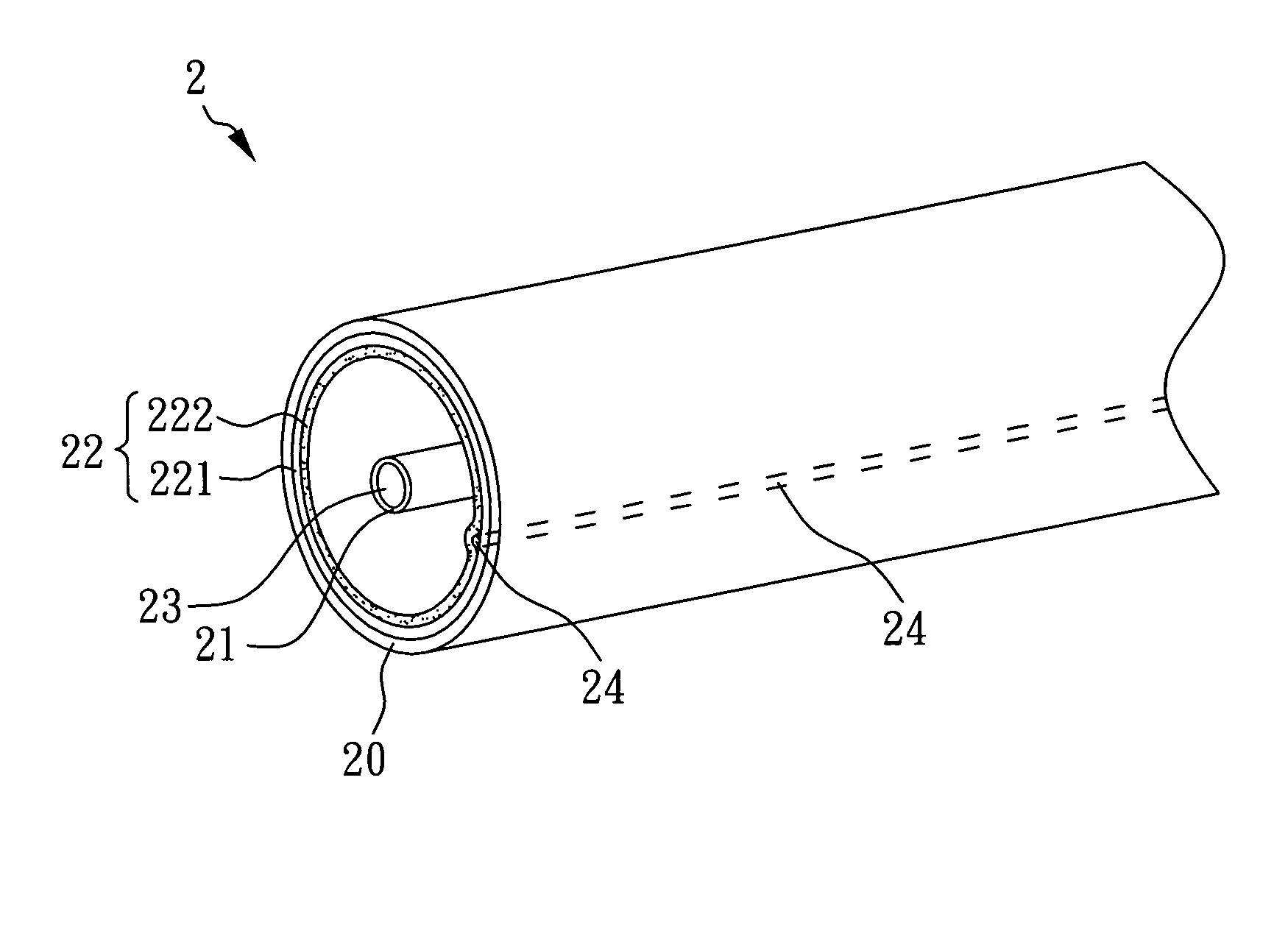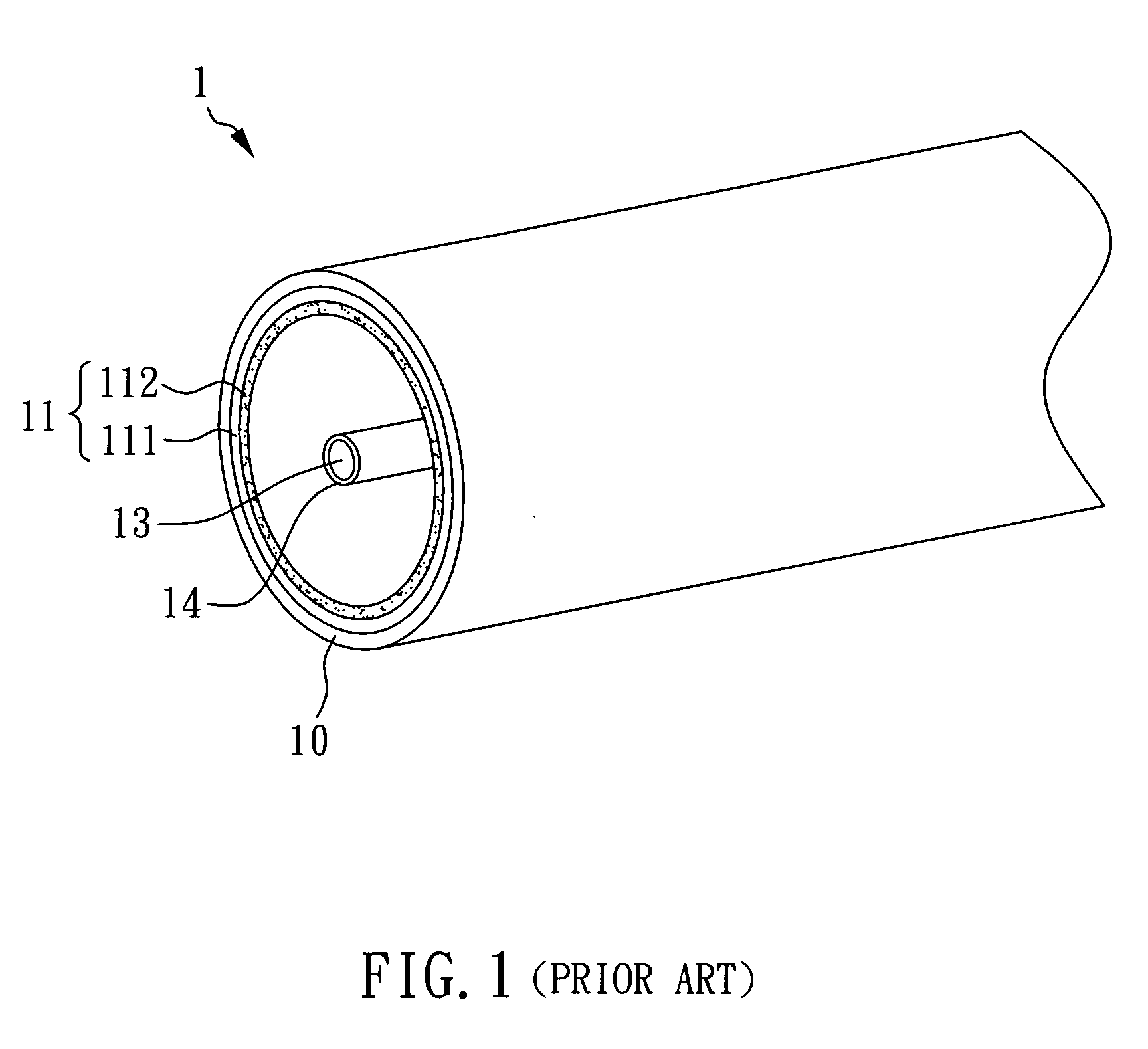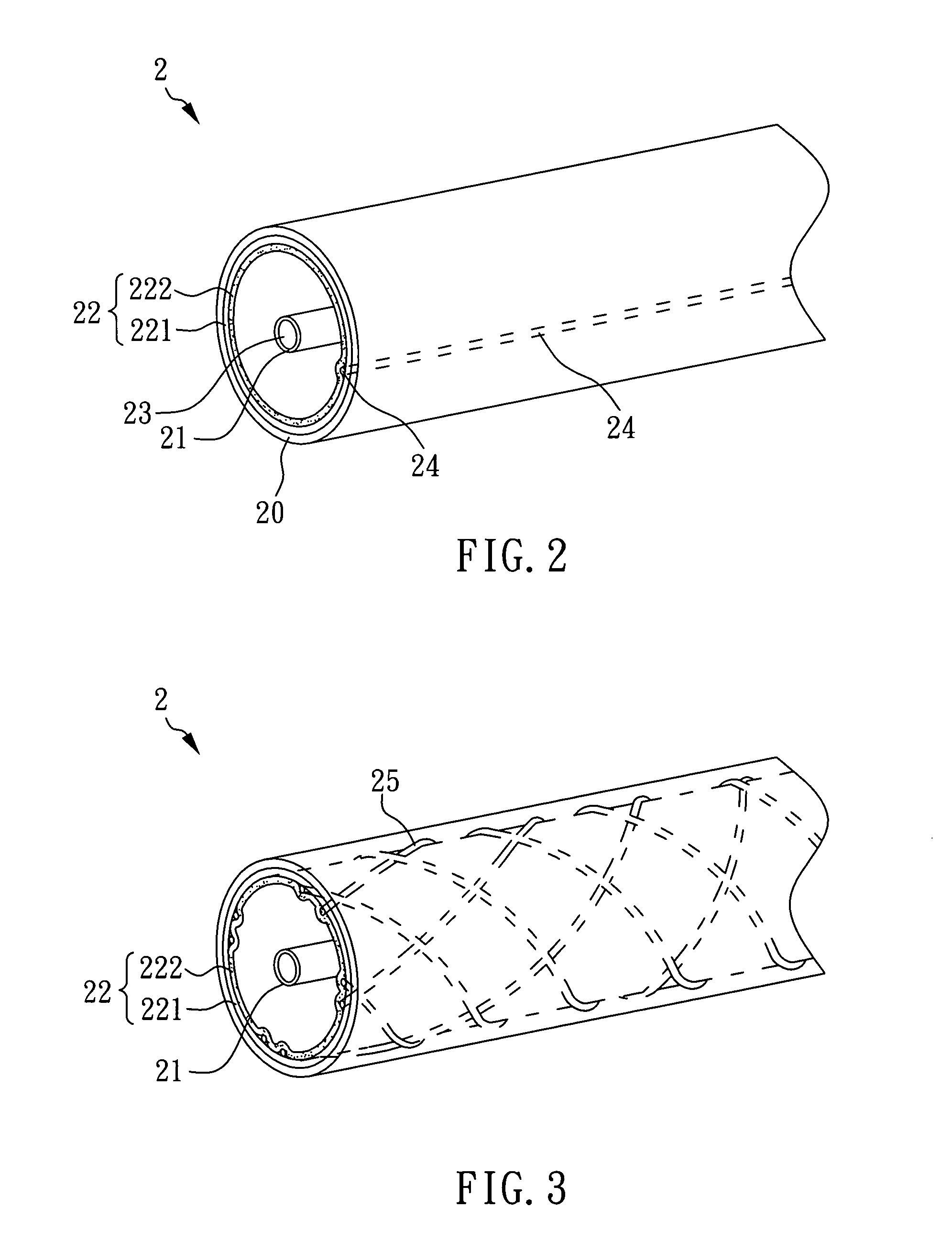Field emission lamp and method for making the same
a field emission lamp and field emission technology, applied in the manufacture of electric discharge tubes/lamps, electrode systems, discharge tubes luminescnet screens, etc., can solve the problems of human health threats, high manufacturing costs, and reduced light transmittance of cnt transparent conductive layers, so as to improve the light transmittance and improve the electron transportation efficiency. , the effect of shortening the electron transportation path length
- Summary
- Abstract
- Description
- Claims
- Application Information
AI Technical Summary
Benefits of technology
Problems solved by technology
Method used
Image
Examples
example 1
[0035]With reference to FIG. 2, there is shown a field emission lamp of the present example 1, which comprises a lamp-tube 20, an anode 22, an auxiliary electrode 24, a cathode 23, and an emitter layer 21. The anode 22 forms on the inner wall of the lamp-tube 20 and comprises a transparent conductive layer 221 and a phosphor layer 222. The transparent conductive layer 221 is made of ITO (indium tin oxide) to enhance high light-transmittance. The auxiliary electrode 24 is in a linear form and locates between the transparent conductive layer 221 and the phosphor layer 222. The auxiliary electrode 24 is made of silver and the line width of the auxiliary electrode is 500 μm. The cathode 23 locates in center of the lamp-tube 20 and is a nickel-chromium alloy wire. The emitter layer 21 locates on the surface of the cathode 23 and is made of CNT (carbon nanotube).
[0036]The auxiliary electrode 24 is helpful for shortening the electron transportation path length, and therefore the transporta...
example 2
[0037]With reference to FIG. 3, there is shown a field emission lamp of the present example 2. Except that the auxiliary electrode 25 is in a net form, the material of the emitter layer 21 is diamond-like carbon instead of CNT, and the material of the auxiliary electrode 25 is copper, the field emission lamp of the present example 2 is the same as that described in the example 1.
example 3
[0038]With reference to FIG. 4, there is shown a field emission lamp of the present example 3. Except that the auxiliary electrode 26 is in a helix form, the material of the emitter layer 21 is nano-diamond instead of CNT, and the material of the auxiliary electrode 26 is nickel, the field emission lamp of the present example 3 is the same as that of the example 1.
PUM
 Login to View More
Login to View More Abstract
Description
Claims
Application Information
 Login to View More
Login to View More - R&D
- Intellectual Property
- Life Sciences
- Materials
- Tech Scout
- Unparalleled Data Quality
- Higher Quality Content
- 60% Fewer Hallucinations
Browse by: Latest US Patents, China's latest patents, Technical Efficacy Thesaurus, Application Domain, Technology Topic, Popular Technical Reports.
© 2025 PatSnap. All rights reserved.Legal|Privacy policy|Modern Slavery Act Transparency Statement|Sitemap|About US| Contact US: help@patsnap.com



